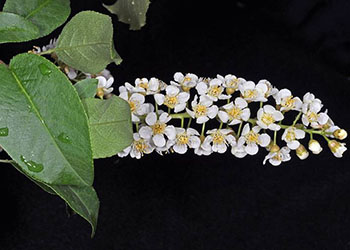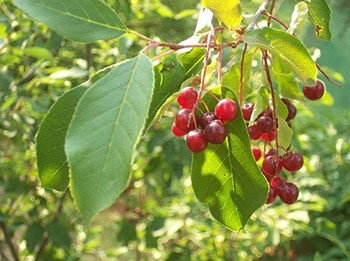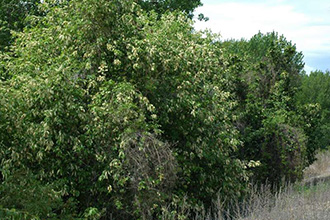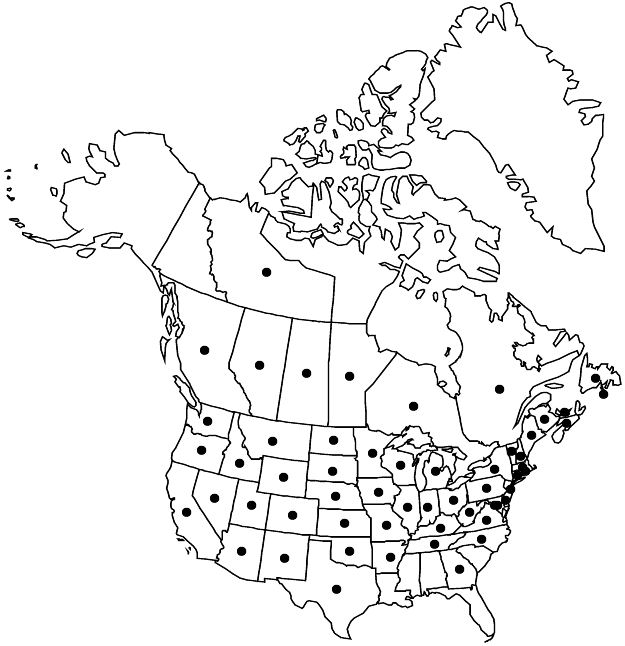Taxonomy: Kingdom - Plantae (plants). Subkingdom - Tracheobionta (vascular plants). Superdivision - Spermatophyta (seed plants). Division - Magnoliophyta (flowering plants). Class - Magnoliopsida (dicotyledons). Subclass - Rosidae. Order - Rosales. Family - Rosaceae (rose). Genus - Prunus L. Species - Prunus virginiana L.
Ecology: Because chokecherry occurs so widely, it is reported in numerous habitat types and plant associations that range from post-disturbance invaders to early-successional to climax or stable. It grows in sparse stands, dense thickets, and under open forest canopies. It is shade tolerant, but reaches its greatest density near forest edges. In the western United States, chokecherry grows at low to mid-elevations in positions in the landscape where combinations of soil and topography permit greater than average accumulation of moisture. These sites include riparian areas, wooded draws, and steep ravines.



